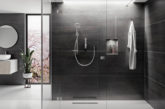
Failure to correctly install plumbing and heating systems could create the optimum environment for Legionella bacteria, potentially causing serious harm to end users. Jerry Whiteley, Technical Manager at the Chartered Institute of Plumbing and Heating Engineering (CIPHE), outlines what installation considerations should be made to minimise this risk in domestic settings and preserve the safety of homeowners.
With 2,010 cases of Legionnaires’ disease recorded among residents from England and Wales between 2017 – 2019, threats to domestic system users are still prevalent. This supports the case for better water safety, as reducing the likelihood of water-borne health risks is crucial. To do so, quality installation is necessary. Initially, taking account of the building structure and layout is key.
Structure and layout
The layout of pipes is directly linked to the structure of a building, as the integrity of structural joist could be affected if pipes are installed in the wrong place. As such, it is important to plan installations with the building make-up in mind.
One of the major considerations is ensuring heat transfer between pipes, or heat gain in voids, is avoided. Given that Legionella bacteria are dormant below 20°C and do not survive above 60°C, water between 20-45°C creates the perfect breeding ground. The optimum temperature range for growth is circa 320C to 400C, with the bacteria multiplying every 15 minutes.
Hot and cold-water pipes should therefore be separated to prevent the cold water being warmed up by heated pipework. If space does not permit this, then insulation can be implemented to minimise heat transfer between pipes in close proximity. Alternatively, the design may require a rethink.
Pipe insulation
Where heating or hot water systems are located in the roof space, pipes are susceptible to changes in the weather and outside temperature. Cold water storage systems specifically could be affected by solar heat gain. To combat this, cold water pipes must be insulated to ensure the temperature does not rise to between 20-45°C.
Conversely, water pipes will be liable to freezing in the winter months. However, the general rule is to keep cold water cold and hot water hot. So, in line with water regulations, pipes and cisterns must be fully insulated and covered with a firm lid. Insulating heating pipes also helps to prevent heat dissipation through floors or ceiling voids. If heat is lost, then homeowners may be subject to increased fuel bills.
The addition of insulation does require considerations in relation to layout, because it is likely to increase the space required for the pipework. For example, a 20mm diameter pipe could become 50mm with insulation.
Oversizing of pipes
Another factor that needs to be well thought-through is the size and capacity of pipes because errors could cause impact on the flow of water. Limescale in domestic systems can be home to Legionella bacteria if water in the pipework and components isn’t regularly replenished. This is why correctly sizing water pipes is so important. By installing a pipe that is larger than necessary, or connecting to existing pipework that becomes oversized, the flow of water may not flush the entirety of the pipe’s interior, meaning Legionella or bio films will not be removed from the system. Ensuring a regular flow of water is therefore a key way to minimise the risk of Legionnaires’ disease. This is also why a ‘dead leg’ of pipe should be avoided.
Other considerations
Hot water stored between 55ºC and 60ºC to minimise Legionella bacteria could cause scalding. To avoid this, thermostatic temperature valves are essential in reducing stored water to a controlled temperature when it is discharged from outlets.
For more information about the CIPHE, or to become a member, contact the team via email: [email protected] or call 01708 472791












